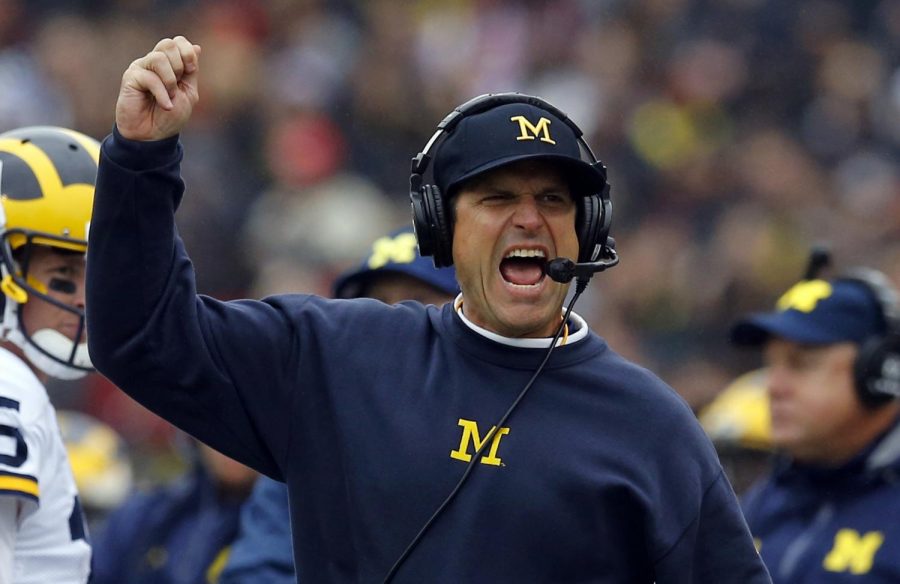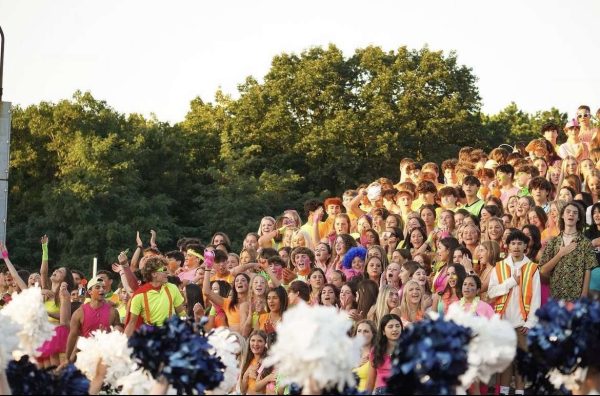College coaching pays more than you think
At big-name universities, coaches make bank–no matter what their teams’ record
Michigan’s Jim Harbaugh
October 18, 2017
Whenever you look at the sidelines of a college football field, there is always one guy with his hands on his hips and headphones on his head, who also happens to be the man in charge. This man is the head coach. In some states, including Kentucky and Kansas, coaches are the highest-paid public employees in the state. Coaches are paid millions of dollars while the highest paid governor makes only $187,000.
Rich Carroll, the Athletic Director at Middletown South High School, says, “At the NCAA level there are only really two sports that are revenue generating, men’s basketball and football specifically. It’s become such a big business at the college level even at the high school level [colleges pay coaches hefty salaries] to entice these big time coaches and big-time recruits.” For football coaches that have such high salaries, only a few teams are are profitable. According to USA Today, the University of Alabama’s revenue is $164,009,745 while the University of Michigan’s is $163,850,616. Michigan has a profit of only about $266,000, while Alabama has a loss of two and a half million dollars.
Although some say a coach’s salary is the result of a team’s record, some coaches who have bad records are being paid more than those with good ones. A prime example of this is Jim Harbaugh from the University of Michigan and Nick Saban from the University of Alabama. Harbaugh’s career record is 53-27 and Saban’s record is 210-61-1 according to SportsReference.com and the NCAA. Percentage wise, Harbaugh’s record is lower at a 66.25% win percentage in comparison to Saban’s at 77.2%. Others say that a coach’s win percentage is a result of the revenue generated by the games. This means that Harbaugh is winning less games than Saban in the number of games played.
Some colleges funnel money from their academic fund to their athletic fund. “I have a problem with that because [students] are being charged for tickets and everything else. But at the same token a lot of [students] go to a lot of these [large athletic schools] because of the football team or basketball team,” Carroll says. According to the Delta Cost Projects at the American Institutes for Research, Football Bowl Subdivision institutions spent $92,000 per athlete in 2010 meanwhile the median academic spending for an equivalent full-time student was less than $14,000 per student. The question falls back to why? Athletics are not only about revenue but are also about the reputation of the school. The better the athletic teams are, and more specifically a well-known and liked sport such as football, the better the “name” of the school. And in succession, the better the “name” is, the more students will apply and want to go to the school, therefore generating more revenue. Carroll says, “Look at a [school] like Clemson’s applications over the past year, two years. They won the [football] national championship last year, [their applications] go up significantly when these teams are successful on the field.”
Is the name of the school really so important that it relies on athletics to maintain its reputation? Does it really make sense for colleges to spend so much money on the salaries of their coaches? Is their salary worth it? Comment below.












